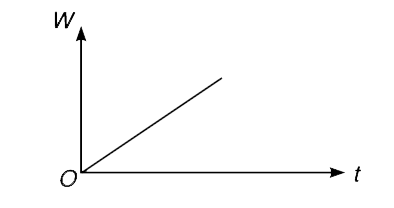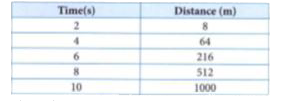When a coin begins to move downwards, it is clear that the state of motion of the coin under goes a change. Answer the below points:
(a) Can this happen without any force acting on it?
(b) Which is this force?
Coins fall towards the Earth because it pulls them.
(b) This force is called force of gravity.
Topper's Solved these Questions
- FORCE AND PRESSUREBook:PEARSON IIT JEE FOUNDATIONChapter:FORCE AND PRESSUREExercise:CLASSROOM CORNER( C. Long Answer Type Questions)
Explore 14 Videos
- FORCE AND PRESSUREBook:PEARSON IIT JEE FOUNDATIONChapter:FORCE AND PRESSUREExercise:COMPETITION CORNER
Explore 37 Videos
- FORCE AND PRESSUREBook:PEARSON IIT JEE FOUNDATIONChapter:FORCE AND PRESSUREExercise:CLASSROOM CORNER( A.Very Short Answer Type Questions) (Assertion-Reason Type Questions)
Explore 3 Videos
- ELECTROMAGNETISMBook:PEARSON IIT JEE FOUNDATIONChapter:ELECTROMAGNETISMExercise:CONCEPT APPLICATION ( LEVEL 2)
Explore 20 Videos
- FRICTIONBook:PEARSON IIT JEE FOUNDATIONChapter:FRICTIONExercise:Competition Corner
Explore 54 Videos
Similar Questions
An archer stretches her bow while taking aim at the target. She then releases the arrow, which begins to move towards the target. Based on this information fill up the gaps in the state ments using the following terms. Muscular, contact, non-contact, gravity, friction, shape, attraction
(a) To stretch the bow, the archer applies a force that causes a change in its _______.
(b) The force applied by the archer to stretch the bow is an example of _____ force.
(c) The type of force responsible for a change in the state of motion of the arrow is example of a ______ force.
(d) While the arrow moves towards its target, the forces acting on it are due to _____ and that due to _______ of air.
View SolutionCan force change only the direction of motion without any change in speed of an object? If yes, how?
View Solution
Knowledge Check
When a body is moving uniformly along a straight line and there is no force of friction, acceleration/retardation of the body. According to Newton's second law of motion, the magnitude of force acting on a body is the product of mass and acceleration of the body
The distance - time table of an object in motion is given below

Which among the Newton's laws of motion can be used to calculate the force acting on the object in motion ?AFirst lawBSecond lawCThird lawDnone of theseThe potential energy of a particle is determined by the expression U=α(x2+y2), where α is a positive constant. The particle begins to move from a point with coordinates (3,3), only under the action of potential field force. Then its kinetic energy T at the instant when the particle is at a point with the coordinates (1,1) is
A(a) 8αB(b) 24αC(c) 16αD(d) ZeroA thin non-conducting ring mass m, radius a, carrying a charge q can rotate freely about its own axis which is vertical. At the initial moment the ring was at rest and no magnetic field was present. At instant t=0, a uniform magnetic field is switched on which is vertically downwards and increase with time according to the law B=B0t. Neglecting magnetism induced due to totational motion of the ring. Now answer the following questions.
The power developed by the forces acting on the ring, as a function of time :AE2q22mtBE2q2mtC2E2q2mtD√2E2q2mt
A particle can move along a straight line. It is at rest when a force (F) starts acting on it directed along the line. Work done by the force on the particle changes with time(t) according to the graph shown in the fig. Can you say that the force acting on the particle remains constant with time?

View SolutionA boy on a train of height h1 projects a coin his friend of height h2 standing on the same train, with a velocity v relative to the train, at an angle θ with horizontal. If the train moves with a constant velocity v' in the direction of x - motion of the coin, find the
(a) distance between the boys so that the second boy can catch the coin,
(b) maximum height attained by the coin, and
( c) speed with which the second boy catches the coin relative to himself (train) and ground.
View SolutionA particle is at rest at x=a. A force →F=bx2→i begins to act on the particle. The particle starts its motion, towards the origin, along X - axis. Find the velocity of the particle, when it reaches a distance x from the origin.
View SolutionAn archer stretches her bow while taking aim at the target. She then releases the arrow, which begins to move towards the target. Based on this information fill up the gaps in the statements using the following terms.
muscular, contact, non-contact, gravity, friction, shape, attraction
The type of force responsible for a change in the state of motion of the arrow is an example of a _________ force
View SolutionWhen a body is moving uniformly along a straight line and there is no force of friction, acceleration/retardation of the body. According to Newton's second law of motion, the magnitude of force acting on a body is the product of mass and acceleration of the body
The distance - time table of an object in motion is given below

The force acting on the object
View Solution